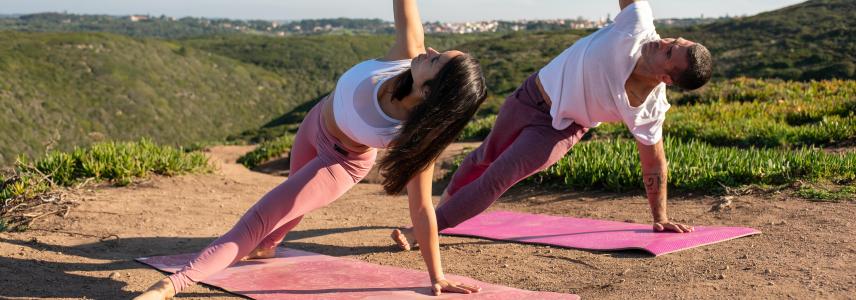6 tips for creating wellness tourism products

Wellness tourism is trending. With most restrictions lifted, many Europeans want to work on their mental and physical well-being after the stressful COVID-19 pandemic. The tourism sector expects the European wellness travel market to grow by around 20% per year. So, what is a good approach for your company?
Tip 1: Incorporate regional elements
European wellness travellers seem more and more interested in local culture. You can benefit from this trend by incorporating local and traditional products, treatments or activities from your country. For example:
- A local product in Africa is red ochre. Red ochre is a vital component in body treatments that Namibia's indigenous people use.
- Local activities in Asia that you could add to your offer include kung fu, meditation and yoga.
Tip 2: Storytelling
Storytelling is a technique you can use to communicate vividly about your product and pique your audience's interest. It is a helpful tool to attract European travellers because tourists often have specific ideas about wellness holidays. They expect a particular atmosphere, and storytelling stimulates their imagination. For example, you can use storytelling to explain how local products are part of the community's history.
Tip 3: Focus on a specific target group
The European wellness tourism market is diverse. Different target groups have different demands. So, focusing on a specific target group is important to make them feel connected to your company.
Wellness tourism target groups
We have identified 3 main target groups:
-
Self-development travellers want to understand themselves better. This group is interested in meditation retreats and yoga, martial arts or fitness retreats;
-
Escapers want a break from their busy city lives and demanding jobs. They want to relax and recharge. Escapers often are families, couples and friends. This group enjoys more generic wellness holidays, such as a destination spa or wellness retreat; and
-
Treatment tourists go on a wellness holiday because of a disease such as rheumatism or chronic pain. This group often goes to hot spring resorts and gets acupuncture treatments.
Tip 4: Create a holistic experience
A holistic approach to wellness seems more and more popular among Europeans. Mind, body and spirit are central to holistic wellness. Many Europeans feel disconnected, unhealthy and experience mental health issues due to their busy lives and the effects of the pandemic. To reconnect with themselves, these travellers are looking for both a physical and mental challenge. You can create a holistic experience by combining wellness activities that focus on different elements. For example, combining:
- Meditation (spirit);
- Workshops (mind); and
- Yoga, kung fu or another physical exercise (body).
Tip 5: Offer other activities
Many tourists who travel far or for a longer period might want to explore your country beyond wellness:
- 49% of the European wellness travellers combine wellness with sun and beach activities;
- 39% combine wellness with visiting cities; and
- 15% combine wellness with walking or hiking.
So, it is important to offer different activities. To maintain a clear focus for your business, consider outsourcing these activities to other (local) companies in the tourism sector.
Tip 6: Offer sustainable options
At least 55% of travellers find sustainability important when booking their holidays. And many wellness tourists consider sustainability even more vital to their personal growth. A sustainable option you could consider is offering vegetarian and vegan food.
Learn more
For more information on the European wellness tourism market, read our study on the opportunities for wellness tourism.
Tjalling de Boer wrote this news article for CBI.
Stay informed
To stay informed on the latest developments in the tourism sector, subscribe to our newsletter.